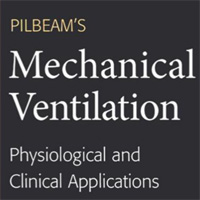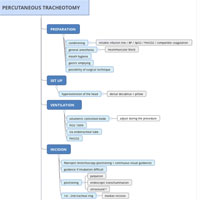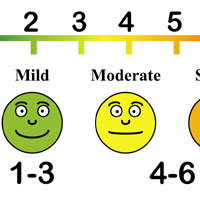Tag: guidelines

Sepsis patients treated and released from emergency departments do well with outpatient follow-up
National guidelines assume that all patients who're diagnosed with clinical sepsis in an emergency department will be admitted to the hospital for additional care, but new research has found that many more patients are being... read more

Petition to Retire the Surviving Sepsis Campaign Guidelines
Concern regarding the Surviving Sepsis Campaign (SSC) guidelines dates back to their inception. Guideline development was sponsored by Eli Lilly and Edwards Life Sciences as part of a commercial marketing campaign. Throughout... read more

Mechanical Ventilation: Physiological and Clinical Applications
Known for its simple explanations and in-depth coverage of patient-ventilator management, this evidence-based text walks readers through the most fundamental and advanced concepts surrounding mechanical ventilation and guides... read more

Guideline for Reversal of Antithrombotics in Intracranial Hemorrhage
This guideline provides timely, evidence-based reversal strategies to assist practitioners in the care of patients with antithrombotic-associated intracranial hemorrhage. Utilizing the GRADE methodology, the committee developed... read more
What’s Your Doctor Reading? How Social Media is Disrupting Medical Education
Traditionally, research would be presented at conferences, discussed at meetings, and gradually incorporated into international guidelines and textbooks. It would then filter down into clinical practice, years after its original... read more

Early Mobilization of Patients in ICU
Currently there is a divide between ICU clinicians who wish to implement early mobilization based on current evidence and clinicians who believe that early mobilization is an intervention that should be tested in a large... read more

How to Run Successful Rounds in the ICU
Rounds in the intensive care unit (ICU) allow for scheduled discussions in which healthcare providers review clinical information and develop care plans for critically ill patients. Despite this straightforward concept, there... read more

Tracheotomy in the ICU: Guidelines from a French Expert Panel
Tracheotomy is widely used in intensive care units (ICUs), albeit with great disparities between medical teams in terms of frequency and modality. Indications and techniques are, however, associated with variable levels of... read more

Noninvasive Ventilation in Patients With Do-Not-Intubate and Comfort-Measures-Only Orders
A large proportion of patients with do-not-intubate orders who received noninvasive ventilation survived to hospital discharge and at 1 year, with limited data showing no decrease in quality of life in survivors. Provision... read more

Comparison of Self-Reported and Behavioral Pain Assessment Tools in Critically Ill Patients
Self-reported and behavioral pain assessment scales are often used interchangeably in critically ill patients due to fluctuations in mental status. The correlation between scales is not well elucidated. The purpose of this... read more

Tracheal Intubation During Adult In-Hospital Cardiac Arrest and Survival
This cohort study uses data from the Get With The Guidelines-Resuscitation registry to investigate the association between tracheal intubation during adult in-hospital cardiac arrest and survival to hospital discharge. In... read more
Guidelines for Tracheal Intubation in Critically Ill Adults
The Intensive Care Society, Faculty of Intensive Care Medicine, Difficult Airway Society and the Royal College of Anesthetists have combined to provide the "Guidelines for the management of tracheal intubation in critically... read more

R.E.B.E.L. EM – Fluid Responsiveness and the Six Guiding Principles of Fluid Resuscitation
Fluid resuscitation is a crucial aspect of emergency and critical care. Since the advent of the concept of early goal-directed therapy, we have placed a huge emphasis on aggressive fluid resuscitation in patients with severe... read more

Managing Sepsis and Septic Shock Current Guidelines and Definitions
While sepsis defies simple definition, it's generally understood to be a clinical syndrome caused by infection that may have profound adverse physiologic consequences. Although its precise incidence is unknown, sepsis is... read more




